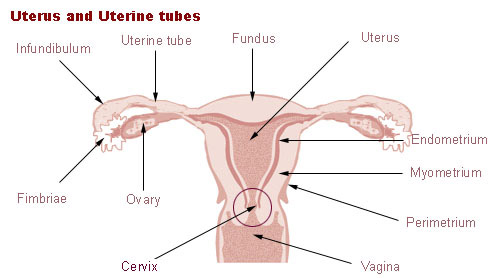Introduction to Cervical Cancer
The uterus, a hollow, pear-shaped organ, is located in a woman's lower abdomen, between the bladder and the rectum. The cervix (from Latin "neck") is the lower, narrow part of the uterus, forming a canal that opens into the vagina, which leads to the outside of the body.
Cervical cancer occurs when normal cells in the cervix change into cancer cells. This normally takes several years to happen, but it can also happen in a very short period of time. Cervical cancer can be detectable by cytological study of epidermal cells removed from the cervix in a process known as the pap smear. Each year, about 15,000 women in the United States learn that they have cancer of the cervix.

Squamous intraepithelial lesion (SIL) is a general term for the abnormal growth of squamous cells on the surface of the cervix. (The word 'lesion' refers to an area of abnormal tissue; 'intraepithelial' means that the abnormal cells are present only in the surface layer of the cervix.) The changes in the cells are described as low grade or high grade, depending on how much of the cervix is affected and how abnormal the cells are.
- Low-grade SIL refers to early changes in the size, shape, and number of cells that form the surface of the cervix. Some low-grade lesions go away on their own. However, with time, others may grow larger or become more abnormal, forming a high-grade lesion. Precancerous low-grade lesions also may be called mild dysplasia or cervical intraepithelial neoplasia 1 (CIN 1). Such early changes in the cervix most often occur in women between the ages of 25 and 35 but can appear in other age groups as well.
- High-grade SIL means there are a large number of precancerous cells; they look very different from normal cells. Like low-grade SIL, these precancerous changes involve only cells on the surface of the cervix. The cells will not become cancerous and invade deeper layers of the cervix for many months, perhaps years. High-grade lesions also may be called moderate or severe dysplasia, CIN 2 or 3, or carcinoma in situ. They develop most often in women between the ages of 30 and 40 but can occur at other ages as well.
If abnormal cells spread deeper into the cervix or to other tissues or organs, the disease is then called cervical cancer, or invasive cervical cancer. It occurs most often in women over the age of 40.
